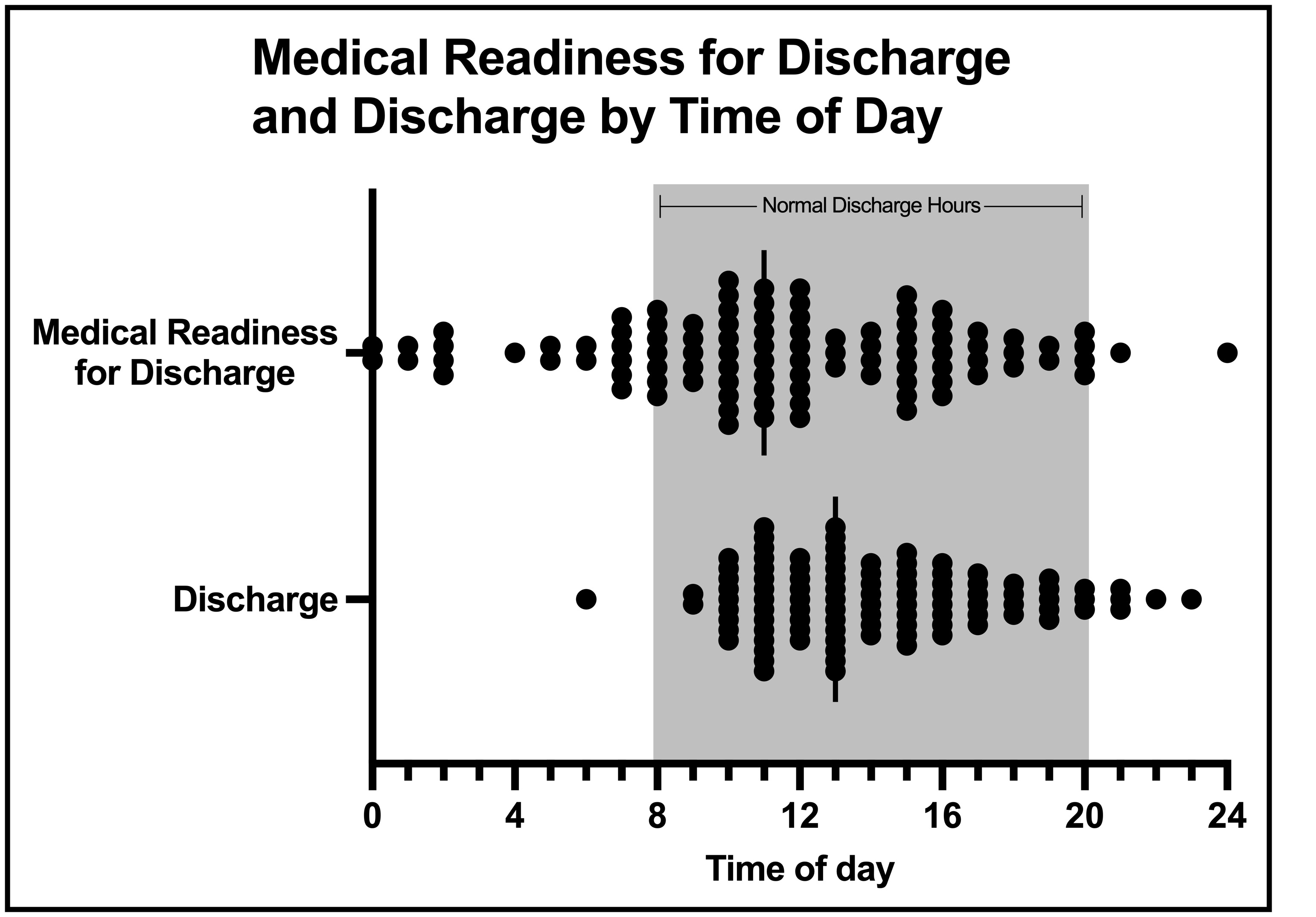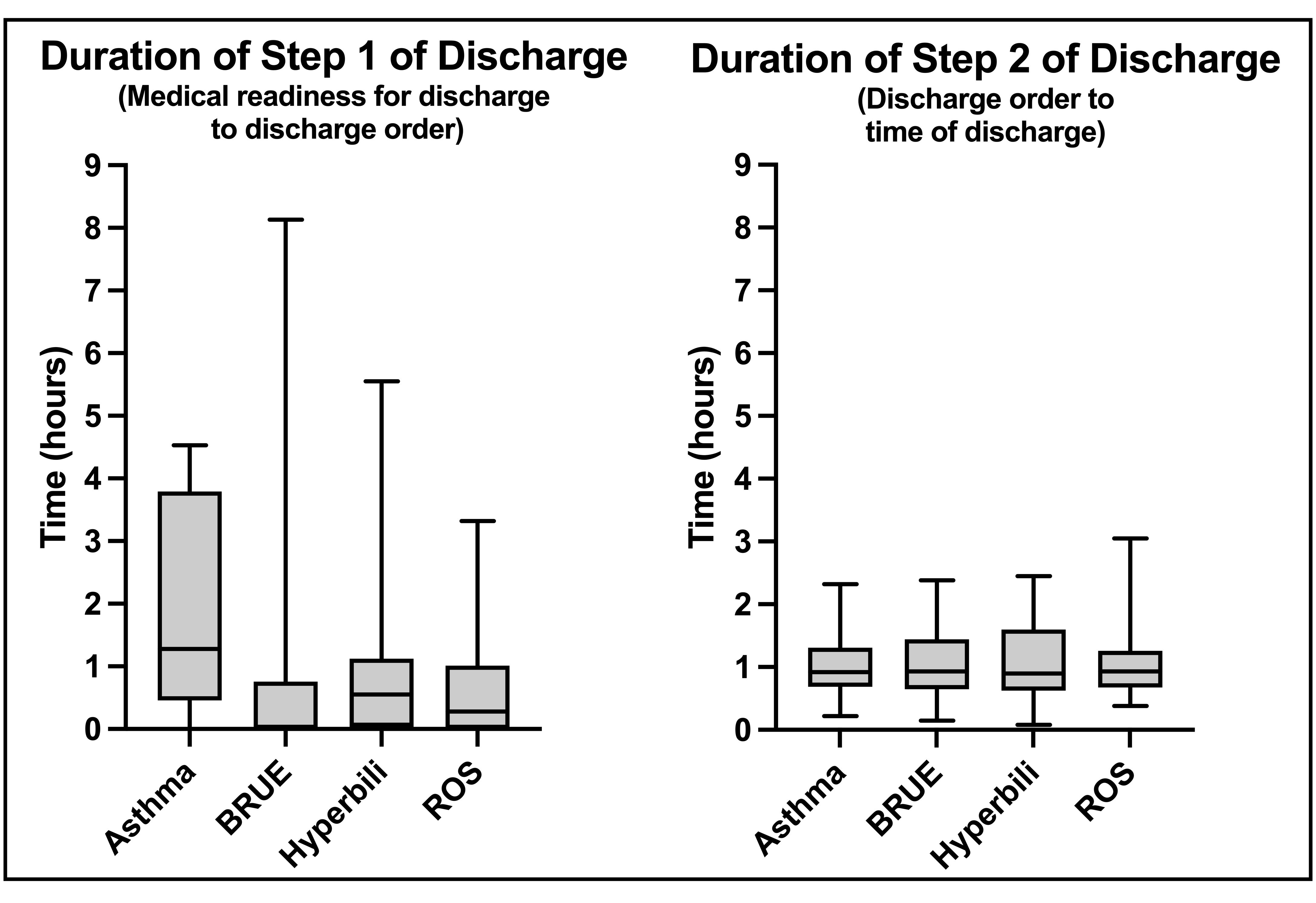Hospital Medicine: Hospital Medicine Quality Improvement
Hospital Medicine 7
776 - Mind the Gap: Understanding the Timeline of Medical Readiness and Discharge
Publication Number: 776.416
.jpg)
Madeleine Nowak, BS (she/her/hers)
Medical Student
Medical College of Wisconsin
Wauwatosa, Wisconsin, United States
Presenting Author(s)
Background: Efficient discharges lead to decreased length of stay and improved hospital flow. An efficient discharge requires both timely recognition of patients’ medical readiness for discharge (MRD) and effective preparation of logistical discharge needs.
Objective: Our objective was to better understand Pediatric Hospital Medicine (PHM) discharges to inform future targeted discharge improvement work by 1. analyzing time of MRD throughout the day, 2. assessing the time from MRD to discharge, and 3. categorizing commonly identified discharge delays.
Design/Methods:
We completed a retrospective chart review of PHM patients hospitalized with one of 4 common pediatric diagnoses (status asthmaticus, brief resolved unexplained event, hyperbilirubinemia, and rule out sepsis) between 09/2021-09/2022. The time of MRD was determined by reviewing the electronic health record (EHR) for time of completion of previously established diagnosis specific criteria. The time of MRD was compared to the time of discharge order and to the time of discharge as recorded in the EHR. If the time from MRD to discharge exceeded 2 hours, the discharge was considered delayed and further chart review was completed to identify potential reasons for the delay. MRD and discharge timing was analyzed using descriptive statistics and discharge delays were assessed by content analysis.
Results: 100 discharge events were analyzed, 25 from each of the four selected diagnoses. MRD occurred throughout the day (33% morning, 43% afternoon, 14% evening and 10% night) with a median hour of 11 am (Figure 1). The median time from MRD discharge was 1.7 hours (0.5 hours from MRD to discharge order and 0.9 hours from discharge order to discharge) with the longest duration from MRD to discharge occurring in patients with status asthmaticus (Figure 2). 40% of patients had a delayed discharge, with patients with status asthmaticus having the most discharge delays. Identified reasons for delays were categorized into coordination of discharge medications, family education, vaccinations, social barriers, and transportation.
Conclusion(s): MRD occurred throughout the day suggesting that time from MRD to discharge may be a more informative metric of discharge efficiency than discharges by a set time of day. While the majority of patients were discharged within 2 hours of MDR, themes of common discharge delays were identified. Next steps include the development of forward facing EHR timestamps noting MRD for improved tracking and real-time communication about this informative metric and targeted interventions to address commonly identified reasons discharge delays.

